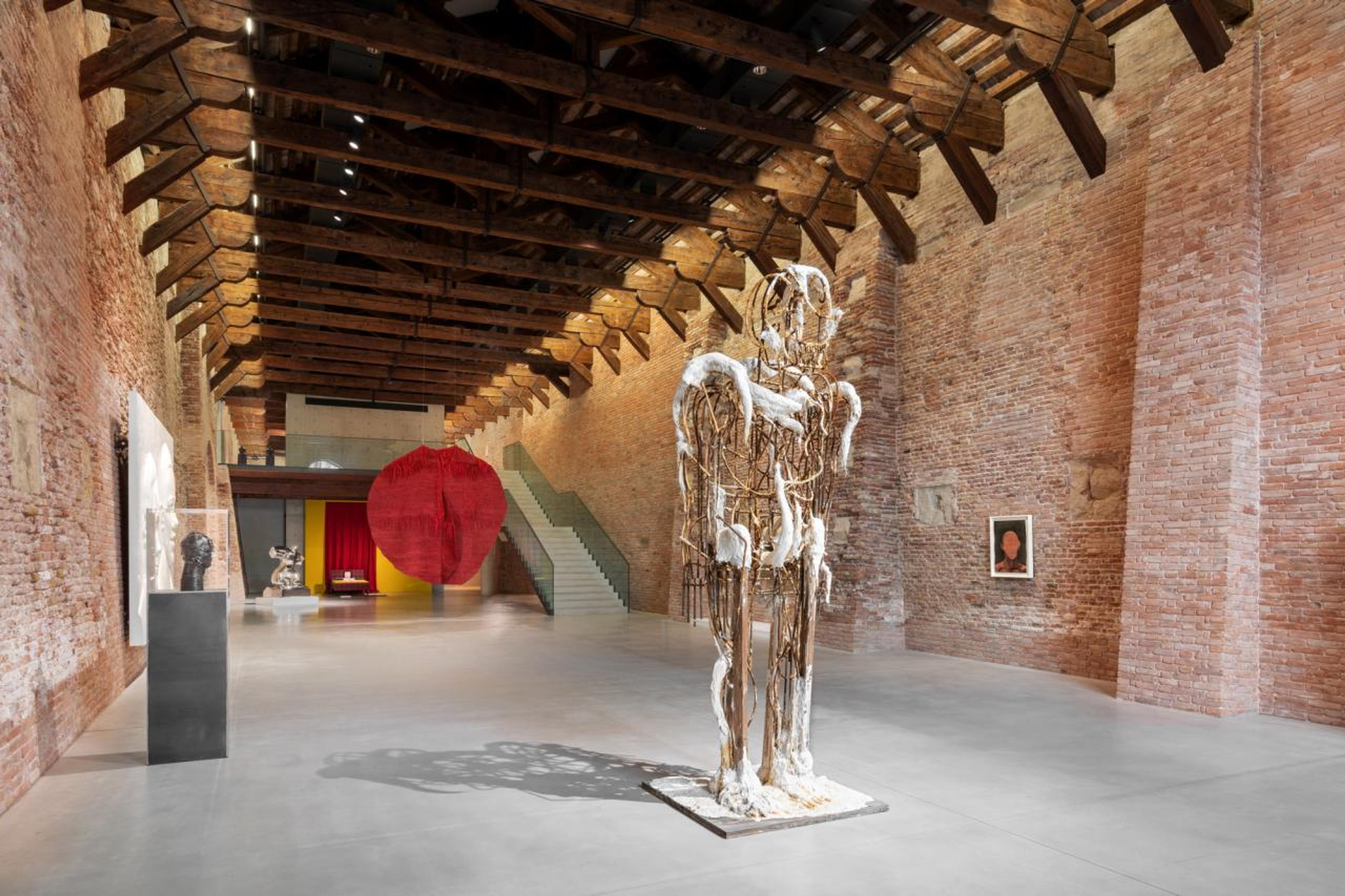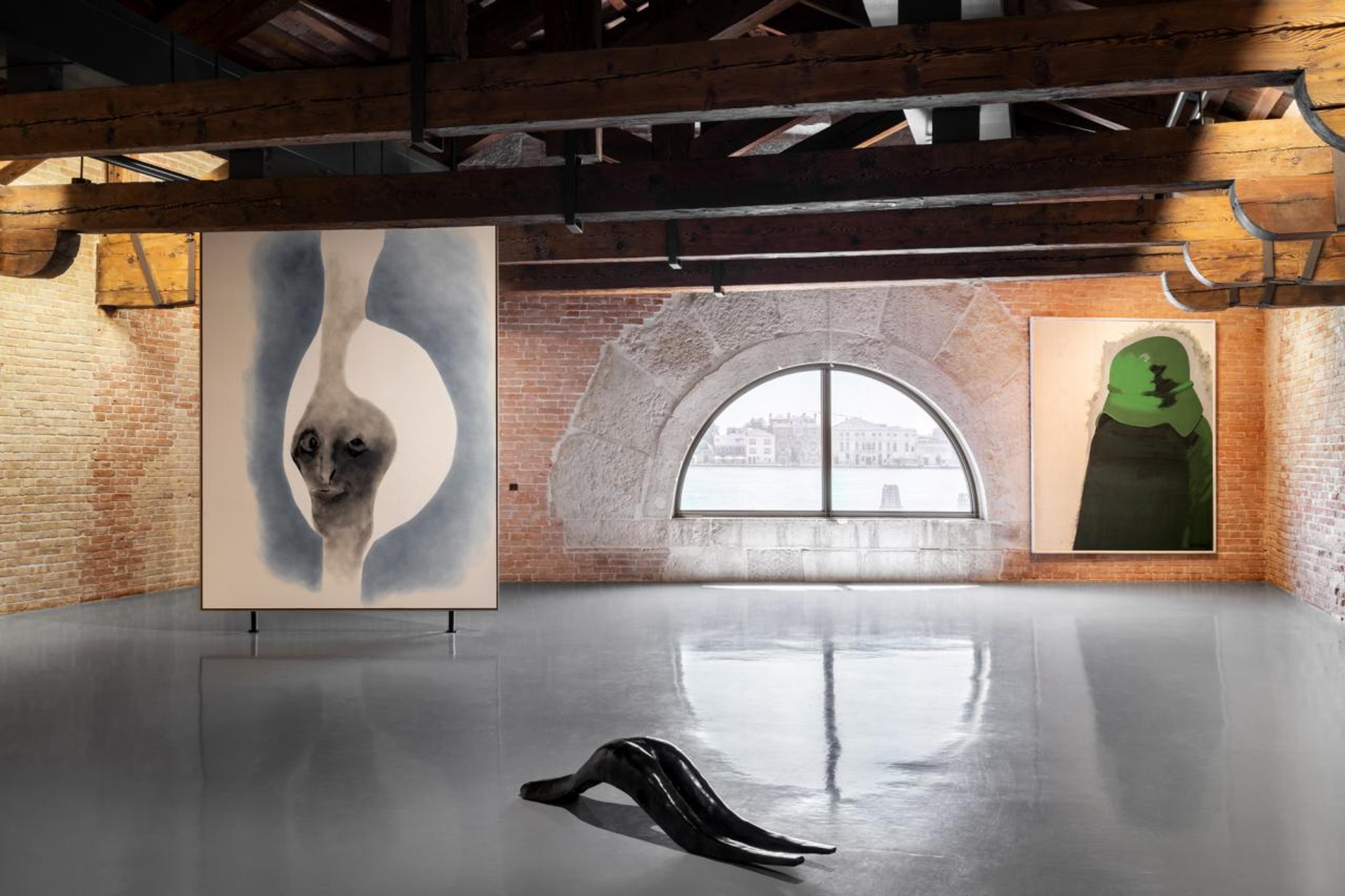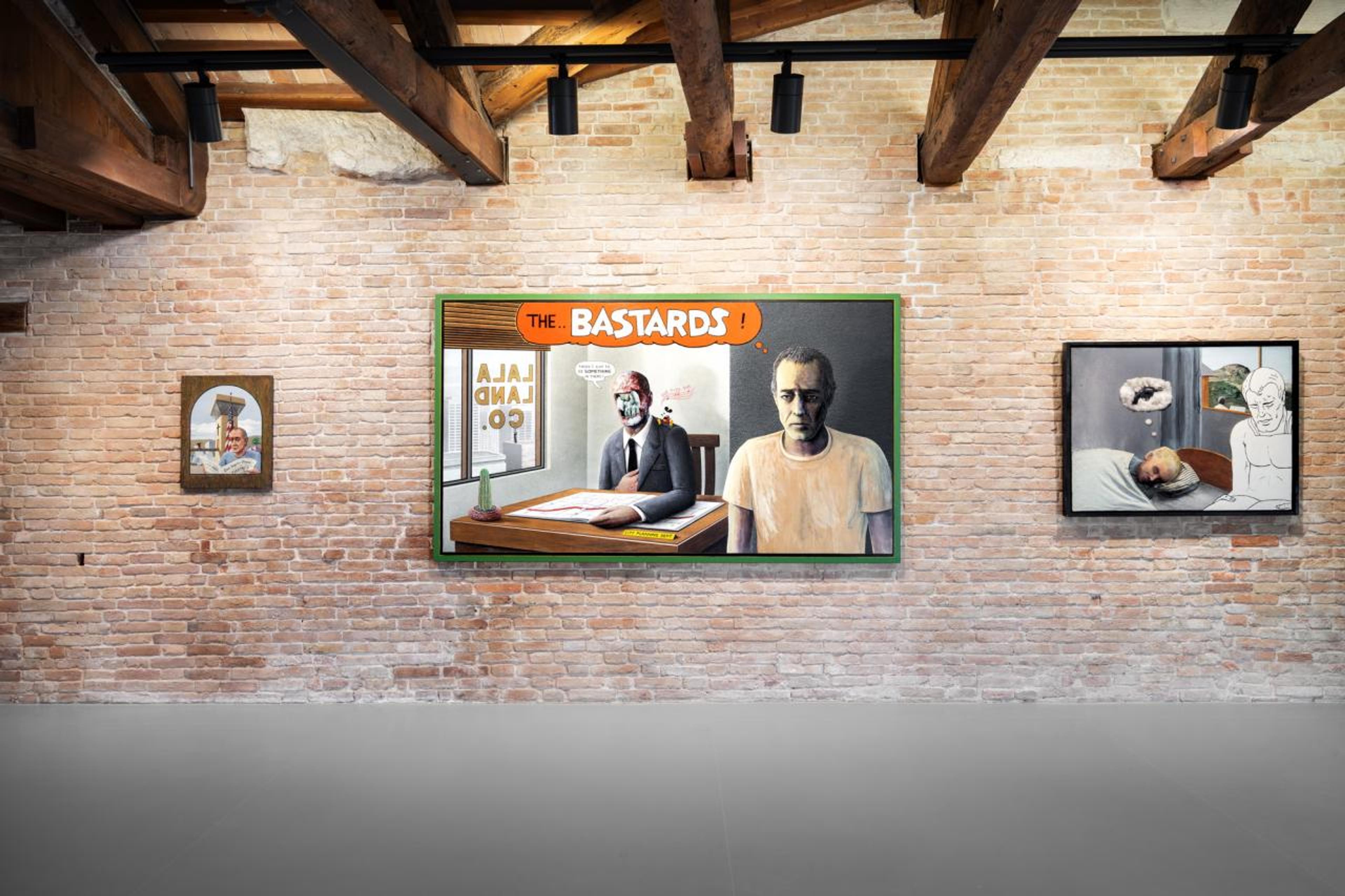Inside the Pinault Collection at the Palazzo Grassi at the “Untitled, 2020” exhibition, I feel like I want to vomit, or cry. Even when it is bad, interesting questions are posed. It’s art – I’m moved. I’ve been tramping around Venice and the surrounding region looking for this feeling. I was hoping to find it by visiting Palladian Villas. Although the Villa La Malcontenta (The Discontented) was phenomenal, featuring conscientiously restored frescos by Giovanni Battista Franco and Giovanni Battista Zelotti, it didn’t give me what I was looking for.
Only when I made it to the Punta della Dogana, in the 18-room exhibition curated by Caroline Bourgeois, Muna El Fituri, and the artist Thomas Houseago, did the feeling find me. The sentiment was supported by an absence of wall tags. This lack of handholding let me be surprised.
“Untitled” attempts to survey several currents in contemporary art and each room is organised around a theme like “elemental” or “mourning”. The exhibition begins in a space with the theme of “standing” and one of the strongest pieces in the show was on my right when I walked in. I knew that I knew who made it, but I couldn’t say whom. Delightfully, I wasn’t swayed by disdain or adoration prompted by a name. I was looking at a large, abstract, gestural, silver painting, drippy and punctuated by strokes of colour. It was obstructed by an old wooden armoire: it’s by David Hammons.
Thomas Houseago, Beautiful Boy , 2019. Courtesy of the artist and Gagosian Gallery. © Thomas Houseago by SIAE 2020. © Palazzo Grassi, photography Marco Cappelletti
Valie EXPORT, Verkreuzung , 1972. Courtesy of Galerie Thaddaeus Ropac © Valie EXPORT by SIAE 2020. Henry Taylor, Don’t Hate Haitians , 2016. Pinault Collection / Henry Taylor, Untitled (Liz Glynn) , 2019. © Henry Taylor. Courtesy of the artist and Blum & Poe
Throughout the exhibition, looming titans of contemporary art are represented. Refreshingly, their presence is meaningful, rather than vain. Works by Mike Kelly, Valie Export, and Philip Guston illustrate what has brought us to the present moment and influenced the younger, or lesser-known, actors in the show.
The second room, “Sexe”, is the most captivating. Unexpected works from standard bearers are mixed with superb pieces from younger artists. David Hockney’s drawings surprise. In his recent traveling survey, early erotic works were on display, but the impression was given that he shifted to a tamer, colour-saturated, campish representation of gay life later in his career. Setting the record straight, we are shown sparse pencil drawings from the 1980s that have a Baconesque darkness. Across the wall, two Ser Serpas paintings of non-binary bodies indicate that the curators have their ear to the street and took their mission seriously. Documentation of well-known performances by Otto Mühl are set next to his works on paper, the latter allow us to see a more subtle, plastic side of the provocateur. We exit the room through a turnstile by Kasia Fudakowski made of carved wooden phalluses, fists, and hooves. It is the most crafted work in the group but loses nothing in being so.
Enrico David, Senza titolo , 2012. Pinault Collection Enrico David, Room for Small Head (Nadia) , 2013. Courtesy of the artist and Michael Werner Gallery Markus Lüpertz, Helm I , 1970. Pinault Collection. © Markus Lüpertz by SIAE 2020. © Palazzo Grassi, photography Marco Cappelletti
Llyn Foulkes, Untitled (Invest in Art) , 2001 / The Rape of the Angels , 1991 / Day Dreams , 1991. © Palazzo Grassi, photography Marco Cappelletti.
Several rooms in the exhibition deal with painting and where the medium sits at the moment. In particular, two works stand out. Henry Taylor’s Untitled (Liz Glynn) (2019), depicting a white woman wearing a Kendrick Lamar and Sza shirt, gives us an ambiguous, contradictory, and accurate look at painting in relation to cancel culture and the fascists in police departments and the White House. Elliot Dubail’s Untitled (2018) diptych, poignantly deals with the line between abstraction and figuration. Furthermore, it is in direct conversation with the almost-too-dark-to-see church paintings found throughout Venice. In contrast, Dubail sheds light with black and brown pigments.
Readymade sculpture is featured in the “Engagement” room with works by Cameron Rowland and Senga Nengudi. Both elegantly tread familiar water, but Nengudi’s craft packs more punch than Rowland’s reliance on conceptualism.
The weakest points in the exhibition lie in works that use the vernacular of folk art and illustration. In particular, Edward Kienholz’s Roxy’s (1960–61) – an installation of a creepy diner – looks dated. I have yet to see an artist use the Americana-horror film aesthetic successfully. Fun-houses and carnivals do it much better.
Betye Saar’s sculptures and Llyn Foulkes’ paintings represent the howl of Black American life. A room with this theme was needed, but Foulkes is too reminiscent of George Condo and the Saar works on display are not up to the task compared to Arthur Jafa’s Love is the Message, the Message is Death . Jafa’s 2016 film is so formally, conceptually, and politically prescient that its own room is justified.
The nausea and excitement that I felt throughout my time at the exhibition could have been due to the excellent quality of the art or the fact that art, even good art, can feel utterly irrelevant at a moment when the world seems like its spinning off its axis. “Untitled” whispers and sometimes shouts about the predicament we live in but it also is a site of pleasure. Profane but not unaware, not a bad place for art to be right now.
Myles Starr is an artist currently living in Vienna.
“Untitled, 2020: Three Perspectives on the Art of the Present”
Punta della Dogana, Pinault Collection, Venice
11 June – 13 December 2020
www.palazzograssi.it






